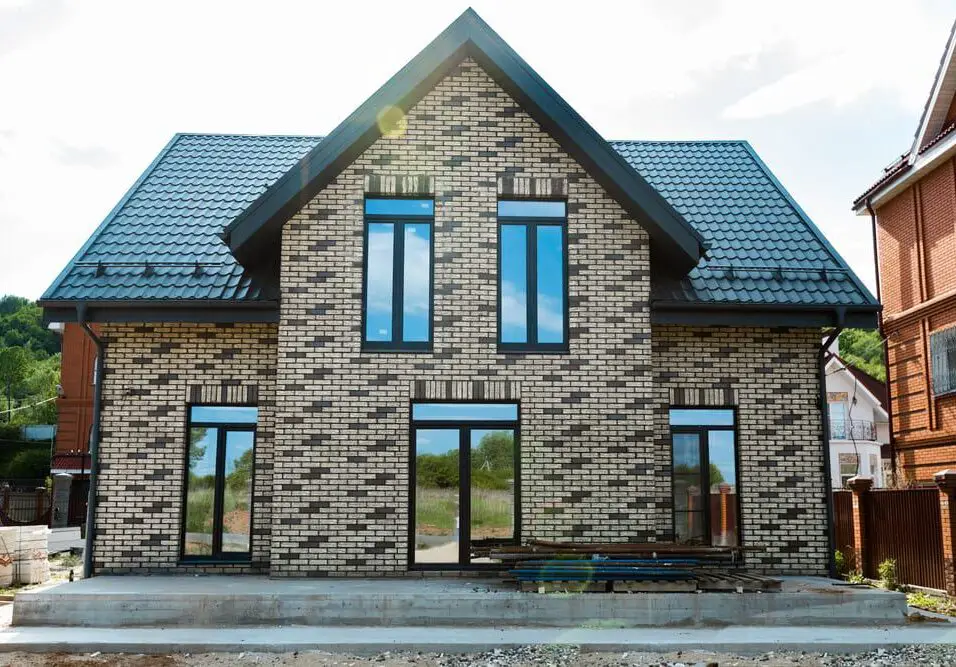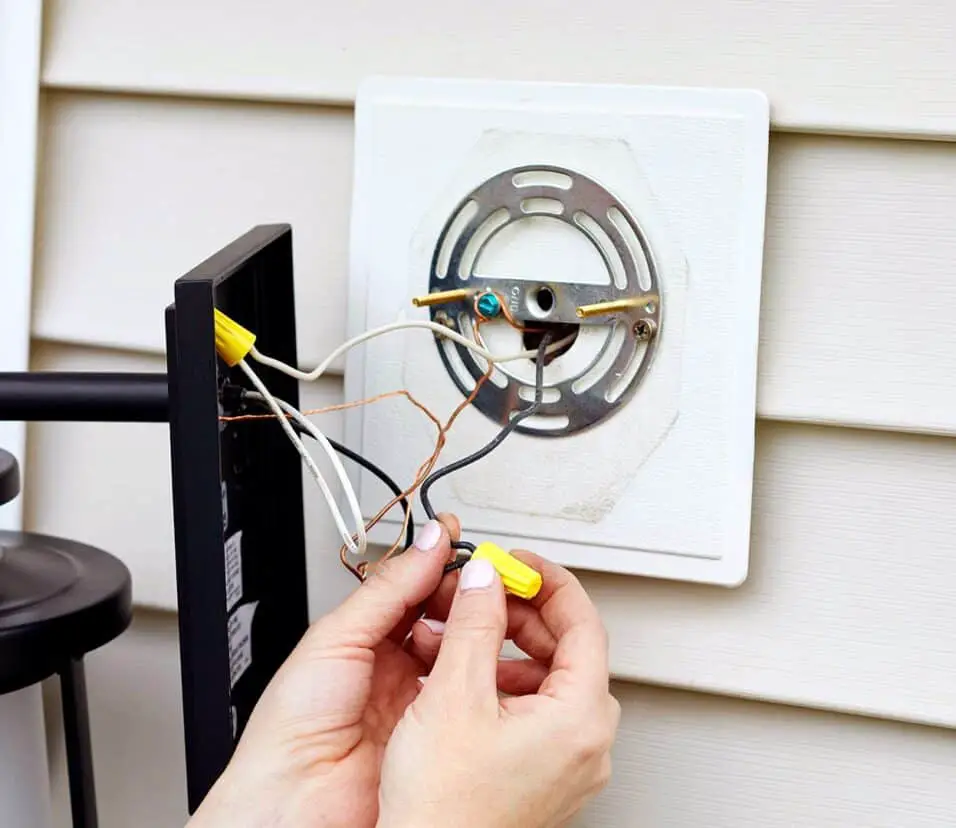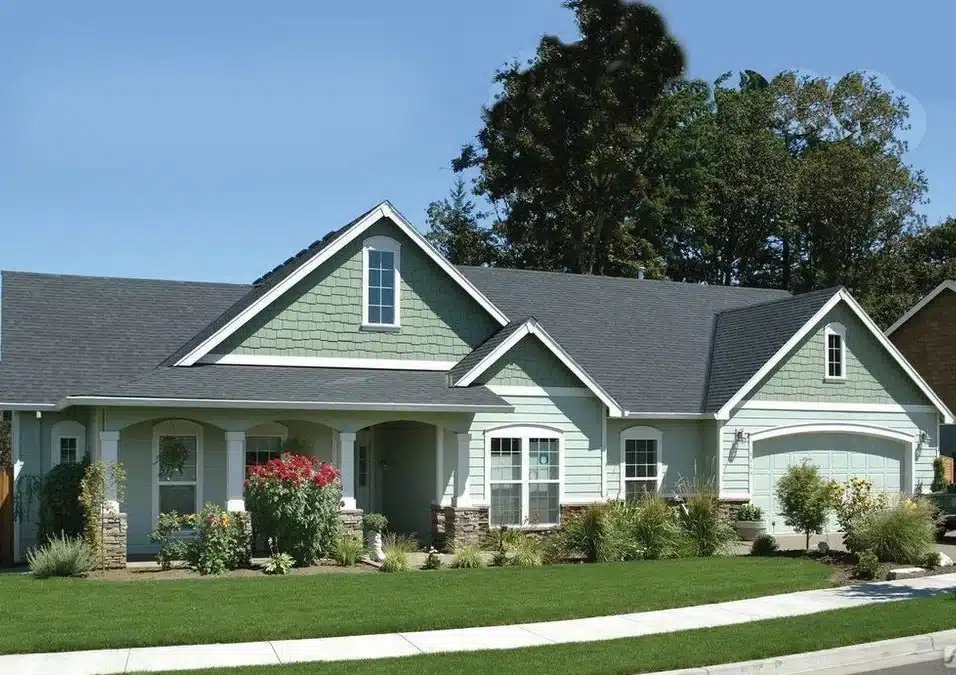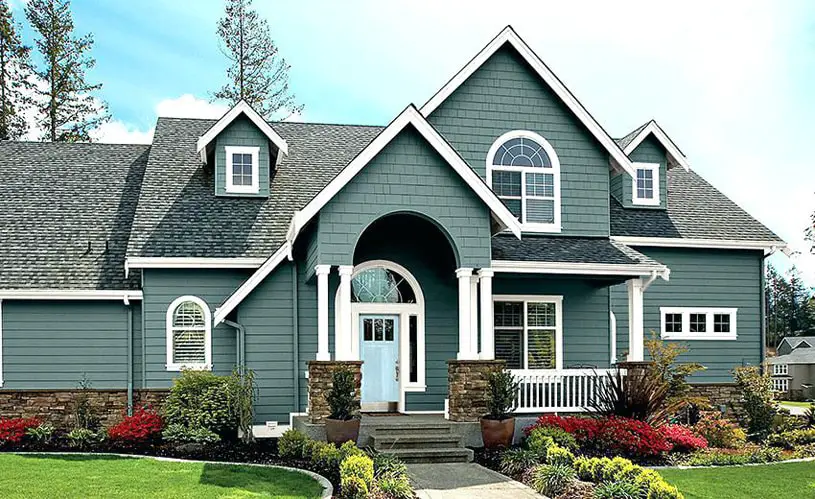How Long Does Exterior Paint Need To Dry Before Rain
Introduction
How Long Does Exterior Paint Need To Dry Before Rain: When it comes to painting the exterior of your home, one of the most important factors to consider is the weather. Specifically, you need to be mindful of rain and how it can affect the drying process of the paint. So, how long does exterior paint need to dry before rain?
The drying time of exterior paint before rain largely depends on several factors: Firstly, the type of paint you are using plays a significant role in determining the drying time. Different types of exterior paint have different drying times, and some may be more resistant to rain than others. For example, oil-based paints generally take longer to dry compared to latex-based paints. It is essential to read the manufacturer’s instructions on the paint can to determine the recommended drying time before exposure to rain.
Secondly, the weather conditions at the time of painting and the forecast for the following days are crucial considerations. If you are expecting rain within a few hours or even a day after painting, it is best to postpone the project. Ideally, you should choose a day with clear skies and low humidity to ensure optimal drying conditions. High humidity can prolong the drying time, while rain can cause the paint to run or wash away.

What happens if it rains after exterior painting?
Rains and winds will wash wet paint off the surface and the paint won’t be able to adhere on a wet surface. And if the paint does not get enough time to dry before it starts raining, it is likely to wash away. The best way to avoid any of these disasters is to be sure to avoid rainy days when painting home exteriors.
Exterior painting is an important task that helps protect and enhance the appearance of a building. However, weather conditions can greatly impact the success of a painting project. One common concern is what happens if it rains after exterior painting. Rain can have a negative effect on freshly painted surfaces, causing streaks, smudges, and even wash away the paint. It is essential to understand the potential consequences of rain on exterior painting and take necessary precautions to ensure a successful outcome.
When it rains after exterior painting, the water can mix with the wet paint, causing it to run and streak. This can result in an uneven finish and a less appealing appearance. Additionally, rainwater can carry dirt and debris, which can get trapped in the wet paint and create imperfections. These issues can be particularly problematic if the rain occurs shortly after the painting is completed, as the paint may not have had enough time to fully dry and cure.
Different types of paint have different drying times and curing processes.
Some paints may dry quickly but require several days or even weeks to fully cure. Therefore, it is crucial to follow the manufacturer’s instructions and allow sufficient time for the paint to dry and cure before exposing it to rain or other adverse weather conditions.
This can include covering the painted areas with tarps or plastic sheets to shield them from rainwater. It is also essential to ensure that the paint has had enough time to dry before covering it, as trapping moisture can lead to mold or mildew growth.
Rain can have a detrimental effect on exterior painting if it occurs before the paint has fully dried and cured. It can cause streaks, smudges, and wash away the paint, resulting in an uneven finish and less appealing appearance. Taking preventive measures and allowing sufficient drying and curing time can help protect the freshly painted surfaces and ensure a successful outcome.
Can I paint exterior a day before it rains?
After 4-6 hours, light rain will not entirely ruin your freshly painted walls but it might still need some repainting when it is dry. To avoid this, aim for five days of normal, not-rainy weather. Pay close attention to the forecast and consult professionals to choose the best time for exterior home painting.
Painting the exterior of a house can be a time-consuming and labor-intensive task. It requires careful planning and consideration of various factors, including the weather. One common concern that homeowners have is whether it is possible to paint the exterior of their house a day before it rains. This is an important question to address, as painting in wet conditions can lead to poor results and damage to the paint job.
Whether it is safe to paint the exterior a day before it rains
Additionally, the weather conditions play a crucial role in determining whether it is safe to paint the exterior a day before it rains. If the forecast predicts heavy rain or thunderstorms, it is generally not advisable to paint the exterior. Rain can wash away the paint and cause streaks or uneven coverage. It can also cause the paint to bubble or peel, resulting in a poor finish.
It is also important to consider the drying time of the paint. Most paints require a certain amount of time to dry and cure properly. If rain is expected shortly after painting, there may not be enough time for the paint to dry completely, which can lead to smudging or damage. It is recommended to check the drying time specified by the manufacturer and allow sufficient time for the paint to dry before rain is expected.
While it is possible to paint the exterior of a house a day before it rains, it is important to consider the type of paint being used, the weather conditions, and the drying time of the paint. By taking these factors into account, homeowners can ensure a successful and long-lasting paint job.
How long until exterior paint is waterproof?
Roughly speaking, your exterior paint should be able to handle some light rain within 2 hours. Around 4 hours it should be ok for rain. It depends on the humidity, temperature, and color. High humidity, low temperatures, and dark colors slow the drying process.
Exterior paint is an essential component of any building’s protection against the elements. It not only enhances the aesthetic appeal of the structure but also acts as a barrier against moisture, UV rays, and other environmental factors. However, the process of making exterior paint fully waterproof takes time and depends on various factors.
The drying time of exterior paint: The first step towards achieving waterproofing is allowing the paint to dry completely. The drying time of exterior paint can vary depending on several factors such as the type of paint, weather conditions, and the number of coats applied. Generally, it takes around 24 to 48 hours for the paint to dry to the touch. However, it is important to note that drying to the touch does not necessarily mean the paint is fully waterproof.
The curing time of exterior paint: After the paint has dried, it enters the curing phase. Curing is a chemical process that allows the paint to reach its maximum hardness and durability. The curing time of exterior paint can range from a few days to several weeks, depending on the type of paint and environmental conditions. During this time, the paint undergoes chemical reactions that help it form a strong bond with the surface and develop its waterproofing properties.
Dark colors slow the drying process
Factors affecting the waterproofing time: Several factors can influence how long it takes for exterior paint to become fully waterproof. The type of paint used, the number of coats applied, the porosity of the surface, and the weather conditions all play a role in the overall waterproofing time. For example, oil-based paints generally take longer to cure and become waterproof compared to water-based paints. Similarly, applying multiple coats of paint can enhance the waterproofing capabilities.
Maintaining the waterproofing properties: Once the exterior paint has fully cured and become waterproof, it is important to maintain its protective properties. Regular maintenance, such as cleaning the surface and inspecting for any signs of damage or wear, can help prolong the lifespan of the waterproofing. Additionally, applying a fresh coat of paint every few years can further enhance the waterproofing capabilities and ensure the continued protection of the building’s exterior.
How long does exterior paint take to fully cure?
Because it dries from the outside in, curing can take much longer than some other paints on the market. In prime conditions, curing latex paint takes 14 days, at a minimum. In poor conditions, such as high humidity or extreme temperatures, latex paint can take upwards of 30 days to cure.
Exterior paint is an essential component of maintaining the appearance and protection of a building. However, it is important to understand that the process of paint application does not end with the final coat. In fact, the paint needs time to fully cure and reach its maximum durability and longevity. The time it takes for exterior paint to fully cure can vary depending on several factors.
One of the primary factors that influence the curing time of exterior paint is the type of paint used. Different types of paint have different chemical compositions and drying times. For example, oil-based paints typically take longer to cure compared to water-based paints. Oil-based paints can take anywhere from 7 to 30 days to fully cure, while water-based paints may cure within 1 to 7 days.
The weather conditions also play a significant role in the curing process.
Extreme temperatures, high humidity, and excessive moisture can all prolong the curing time of exterior paint. Ideally, the paint should be applied when the weather conditions are moderate, with temperatures between 50 to 85 degrees Fahrenheit and humidity levels below 85%. These optimal conditions allow the paint to dry and cure at a reasonable pace.
The number of coats applied can also affect the curing time. It is important to follow the manufacturer’s instructions regarding the recommended drying time between coats to ensure proper curing.
The time it takes for exterior paint to fully cure can vary depending on the type of paint used, weather conditions, and the number of coats applied. It is important to allow sufficient time for the paint to cure before subjecting it to harsh conditions or cleaning. This will ensure that the paint reaches its maximum durability and provides long-lasting protection for the exterior surfaces of a building.
What is the best time of day to paint outside?
A day with no rain, usual temperature and low wind is your best time for exterior house painting. This ensures a hassle-free paint job and consistent finish. Ideally, an exterior paint job should last for at least five years, but by using quality paints, it can last for over 10 years without a retouch.
When it comes to painting outside, the best time of day can greatly impact the outcome of your project. The right time can ensure that your paint dries properly and that you achieve the desired finish. So, what is the best time of day to paint outside?
Hassle-free paint job and consistent finish
The early morning hours:
Many professional painters recommend starting your outdoor painting projects in the early morning hours, typically between 6 am and 10 am. During this time, the temperature is usually cooler, which allows the paint to dry more evenly and prevents it from drying too quickly. Additionally, the morning sun is not as intense as it is later in the day, reducing the risk of the paint drying too fast and causing brush marks or streaks.
The late afternoon:
Another optimal time to paint outside is during the late afternoon, typically between 4 pm and 6 pm. During this time, the temperature is usually cooler again, and the sun is not as intense as it was earlier in the day. This allows the paint to dry more evenly and reduces the risk of it drying too quickly. Painting in the late afternoon also gives you the advantage of having more natural light, which can help you see any imperfections or areas that need touch-ups.
Avoiding midday:
During this time, the sun is at its peak, and the temperature is usually the hottest. The intense heat and direct sunlight can cause the paint to dry too quickly, leading to brush marks, streaks, and an uneven finish. Additionally, the high temperatures can make it uncomfortable for the painter and may cause the paint to bubble or blister.
Consider the weather:
While the time of day is important, it is also crucial to consider the weather conditions when planning your outdoor painting project. Avoid painting on days with high humidity or when rain is in the forecast, as these conditions can affect the drying time and overall quality of the paint job. It is best to choose a day with moderate temperatures, low humidity, and little to no chance of rain for the best results.
what is the best time of day to paint outside?
The recommended drying time for exterior paint before it can withstand rain varies depending on several factors such as the type of paint used, weather conditions, and the thickness of the paint coat. In general, most exterior paints require at least 24 hours to dry before they can withstand light rain or drizzle. However, it is important to note that this is just a general guideline and it is always best to follow the specific instructions provided by the paint manufacturer.
If you are expecting heavy rain or harsh weather conditions, it is advisable to wait for a longer period of time before exposing the freshly painted surface to rain. This is because the paint needs sufficient time to cure and fully bond with the surface, ensuring its durability and resistance to water damage. Waiting for at least 48 to 72 hours after painting is a good rule of thumb for better rain resistance.
It is also worth considering the temperature and humidity levels when determining the drying time. Higher temperatures and lower humidity levels can accelerate the drying process, while cooler temperatures and higher humidity levels can prolong it. Therefore, it is important to take these factors into account and adjust the drying time accordingly to ensure the best results and protection against rain damage.
How long should I wait after applying exterior paint before it is safe from rain damage?
The recommended drying time for exterior paint before it can withstand rain varies depending on several factors such as the type of paint, weather conditions, and the thickness of the paint coat. However, as a general guideline, it is advisable to wait at least 24 to 48 hours before exposing freshly painted surfaces to rain.
During this initial drying period, the paint undergoes a process called curing, where it hardens and forms a protective barrier. If rain comes into contact with the paint before it has fully cured, it can cause streaks, smudges, or even wash away the paint entirely, resulting in a compromised finish.
It is important to note that certain types of paint, such as oil-based paints, may require a longer drying time compared to water-based paints. Additionally, if the weather conditions are particularly humid or cold, it may prolong the drying process.
Is there a specific timeframe I should allow for exterior paint to dry before it can be exposed to rain?
Exterior paint needs a certain time to dry before being exposed to rain. The drying time for outdoor paint before it can tolerate rain depends on the type, weather, and surface. The majority of exterior paints need at least 24 hours to dry before being exposed to rain.
It is important to note that this drying time can be affected by factors such as humidity, temperature, and the thickness of the paint layer. In humid or cold conditions, it may take longer for the paint to dry properly. Additionally, if multiple coats of paint are applied or if the paint layer is thick, it may also require more time to dry.
Allowing the paint to dry for the recommended timeframe is crucial to ensure its durability and resistance to rain damage. Therefore, it is important to check the manufacturer’s instructions for the specific paint you are using and follow their recommended drying time to ensure the best results.
What is the minimum drying period required for exterior paint to be rain-resistant?
The minimum drying period required for exterior paint to be rain-resistant can vary depending on several factors such as the type of paint used, weather conditions, and the surface being painted. However, as a general guideline, most experts recommend waiting at least 24 to 48 hours before exposing freshly painted exterior surfaces to rain.
During this drying period, it is crucial to ensure that the painted surface is protected from any moisture, including rain, as it can interfere with the paint’s ability to properly cure and adhere to the surface. Applying a tarp or other protective covering can help shield the painted area from rain and prevent any potential damage.
It is important to note that different types of paint may have specific drying time recommendations provided by the manufacturer. Additionally, factors such as high humidity or low temperatures can prolong the drying time, so it is essential to consider these variables when determining the minimum drying period for exterior paint to be rain-resistant.
Can you provide guidance on the ideal waiting time for exterior paint to dry before rain?
When it comes to ensuring the longevity and durability of your exterior paint job, allowing sufficient drying time before rain is crucial. While the exact waiting time may vary depending on factors such as temperature, humidity, and the type of paint used, a general guideline is to wait at least 24 to 48 hours before exposing the freshly painted surface to rain.
This waiting period allows the paint to fully cure and form a protective barrier against moisture. It is important to note that even if the paint feels dry to the touch, it may not have fully cured underneath. Rushing the process and exposing the paint to rain too soon can result in water damage, streaking, or even complete paint failure.
Additionally, it is advisable to check the manufacturer’s instructions or consult with a professional painter for specific recommendations regarding drying time for the particular paint product you are using. By following these guidelines and allowing ample drying time, you can ensure that your exterior paint job remains intact and beautiful for years to come, even in rainy weather.

Conclusion
The drying time for exterior paint before rain is an important consideration for any painting project. It is crucial to allow sufficient time for the paint to dry and cure properly before exposing it to rain or other moisture. The specific drying time can vary depending on various factors such as the type of paint, weather conditions, and the surface being painted. However, as a general guideline, it is recommended to wait at least 24 to 48 hours before exposing freshly painted surfaces to rain.
Allowing sufficient drying time for paint house exterior before rain is essential to ensure a long-lasting and durable finish. Rushing the drying process or exposing freshly painted surfaces to rain too soon can result in poor adhesion, streaking, or even wash-off of the paint. By following the recommended drying times, considering the type of paint and weather conditions, and following the instructions provided by the paint manufacturer, you can achieve a successful and professional-looking paint job for your exterior surfaces.








